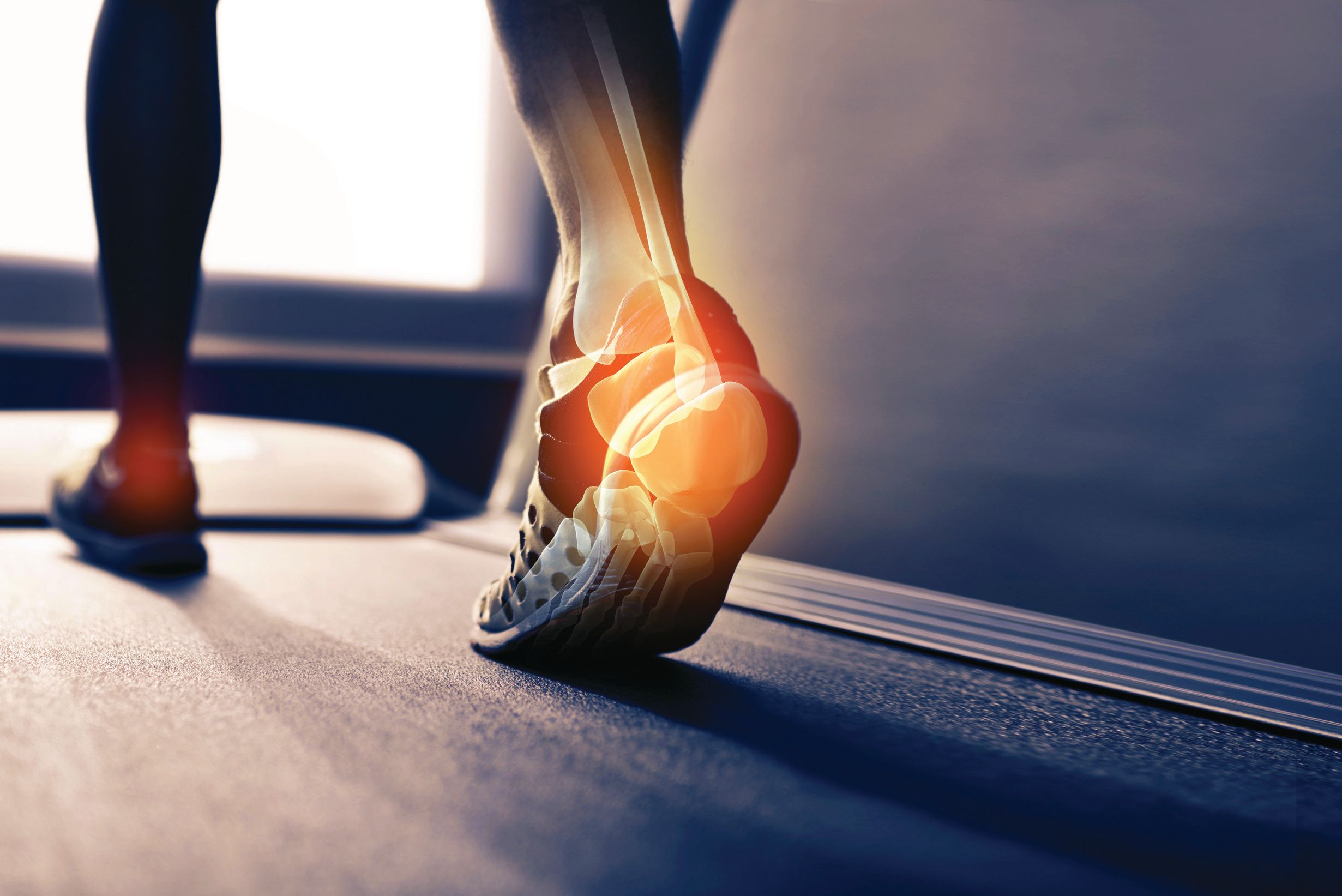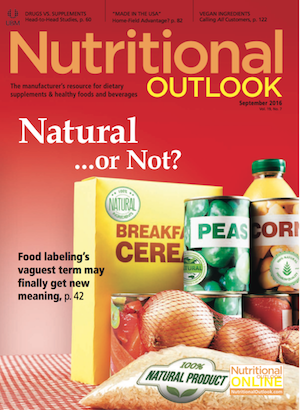Bone Health Ingredients Stand Tall in New Research
Natural ingredients for bone support span time-tested vitamins and minerals, as well as novel ingredients and creative delivery systems.
Photo © iStockphoto.com/Yuri_Arcurs

Once considered an unpleasant and unavoidable part of getting older, low bone mass and osteoporosis are now regarded as a major health threat for Americans, according to the International Osteoporosis Foundation. Despite celebrity “Got Milk” campaigns and the proliferation of calcium supplements on the market, the foundation estimates that 55% of women and men in the U.S. aged 50 and older (almost 44 million) are at risk of osteoporosis. By 2020, as many as 61 million could be at risk.
“As the population ages and the percentage of adults, men and women, older than 80 increases, bone fractures from falls have become a major health concern to the medical community,” says Cecilia McCollum, executive vice president of ingredients firm Blue California (Rancho Santa Margarita, CA). “Obviously, prevention is key, and a healthier bone density will prevent fractures that can significantly reduce the quality of life of the patient and may very likely reduce the lifespan of the patient as well.”
Though calcium remains the poster child in this area, new research shows that many nutrients are worthy of supporting-if not starring-roles in the fight against bone density loss. “For established ingredients like vitamin D, the research is driven by curiosity and a desire to have a better understanding of the relationship between nutrition, health, and disease,” explains Duffy MacKay, ND, senior vice president of scientific and regulatory affairs at the Council for Responsible Nutrition (CRN; Washington, DC). “For novel and new ingredients, research is necessary to establish the benefit with scientific evidence, which is required for compliance with regulations.”
Vitamins and Minerals
Calcium is a bone-health mainstay with ongoing research. In a new seven-year study, female subjects who took a plant-based calcium supplement (as the brand AlgaeCal) also enriched with magnesium, strontium, boron, and vitamins D3, K2, and C experienced an uptick in bone mineral density, to the tune of about 1% per year, amounting to a 7.3% bone mineral density increase over the course of the seven-year study1. For comparison, the researchers pointed out that normal age-related annual bone loss is about 1% per year after midlife.
And though bone loss is primarily seen as an issue affecting older individuals, prevention can start much earlier, according to a new study published in the Journal of Bone and Mineral Research2. In this study, researchers demonstrated a beneficial effect of vitamin D supplementation that, in adolescent girls, lasted well beyond the duration of the one-year treatment. Researchers assigned 167 adolescent girls and boys to take either vitamin D supplementation or placebo for 12 months, measuring bone mineral content and density at baseline, at 12 months when the study completed, and again at 24 months, fully one year after the study’s completion. Girls who took vitamin D during the trial had a significantly larger bone mineral content increase at 24 months over baseline when compared to those assigned placebo, meaning the beneficial effects of D supplementation lasted one year after the trial completed. There was, however, no significant difference in bone mass changes between the groups of boys.
Vitamin K2 MK-4 is a form of vitamin K2 found in animal products like meat, cheese, and eggs, with benefits for bone health. Recently, a mouse study found that vitamin K2 MK-4 may induce recovery from bone mineral loss caused by stress3. In this study, researchers divided mice into three groups: control, stress, and stress with MK-4 treatment. Stress was induced via water-immersion restraint. The stressed groups experienced significantly lower bone mineral density than the control group, which researchers chalked up to the high bone turnover that stress causes; however, the MK-4 group did experience a suppression of bone breakdown, leading to better recovery from the bone loss.
Another study on vitamin K2 focused on its bioavailability in a creative delivery format: yogurt. Published in the European Journal of Clinical Nutrition earlier this year, researchers found that NattoPharma’s (Oslo, Norway) MenaQ7-MK-7 derived from Bacillus subtilis natto fermentation-is highly bioavailable when ingested via yogurt and soft gel capsules. These results, the company said, demonstrate that MenaQ7 is effective in both food and supplement formats, broadening its appeal to an even wider population of individuals4.
In the study, researchers compared three different deliveries over the course of eight weeks: 1) yogurt that researchers dubbed Kplus, fortified with MenaQ7 Pure (a nature-identical version of the original MenaQ7 ingredient) plus vitamins D3 and C, magnesium, and omega-3 polyunsaturated fatty acids, 2) yogurt fortified with MenaQ7 Pure only, and 3) MenaQ7 Pure soft gel capsules. Researchers then compared the fasting concentrations of plasma MK-7 among the participants.
“The increase in plasma MK-7 with the yogurt Kplus product was more pronounced than the increase in MK-7 with the capsules. However, circulating desphospho-uncarboxylated matrix Gla-protein and uncarboxylated osteocalcin were significantly lowered after consumption of both the yogurt products and the MK-7 capsules, reflecting vitamin K status improvement from both delivery methods,” says Eric Anderson, the company’s senior vice president of global sales and marketing. “In other words, both the yogurt products and the capsule effectively lowered inactive osteocalcin (a K-dependent protein that binds calcium to the bone matrix when it’s activated by vitamin K2), which means more osteocalcin was in fact activated and put to use in the body to support bone health.”
The future of vitamin K will undoubtedly include more innovation on the delivery front, as studies point to efficacy in fortified foods that rivals that of supplements. Of vitamin K2 MK-4, Blue California’s McCollum says, “I would recommend making this product more accessible, producing chewable tablets and adding it to dietary supplements in many different categories, including sports, functional beverages, antiaging, and weight-loss products, as well as products formulated specifically for the elderly.”
Vitamin E has also recently entered the spotlight for potential bone-health benefits. Published earlier this year in the British Journal of Nutrition5, one study associated greater consumption of vitamin E with greater bone mineral density in women, but not in men. This particular study examined 3,203 Chinese adults (2,178 women and 1,025 men) between the ages of 40 and 75.
Crossover Ingredients
In addition to the minerals and vitamins that dominate the bone-health category, formulators are looking to other proven ingredients.
Known primarily as a beauty supplement ingredient, collagen is making a name for itself as a cutting-edge ingredient for bone health. “Bone itself is a living tissue comprising 75% inorganic materials, primarily calcium phosphate crystals, and 25% collagen calculated by dry mass,” says Eden Somberg, MS, LAc, director of business development at AIDP (City of Industry, CA). “So when we supplement with minerals and vitamins only, we’re not addressing over one-quarter of the structural composition, and that’s a significant number.”
AIDP first completed a three-month study on women, focused on calcium-collagen chelate supplementation; recently, the company followed this study up with a longer-term evaluation, completed in 20156. Performed at Florida State University, AIDP’s KoACT ingredient was put to the test for helping to prevent or reverse bone loss in postmenopausal women. The study protocol also included a calcium supplement, says Somberg, which allowed researchers to compare the ingredients head-to-head. “The study concluded that KoACT prevented bone loss in the patient population when calcium could not prevent bone loss in the same study group,” Somberg explains. “The duration of the study was one year, and it demonstrated that KoACT significantly increased biomarkers of bone synthesis.”
KoACT is not merely a blend of calcium and collagen, the company explains; rather, it is a matrix including both ingredients that specifically enhances the efficacy of each, the company says. It’s appropriate in a variety of applications, from capsules to bars, beverages, and stick packs.
Yet another crossover ingredient that formulators are exploring when it comes to bone health is antioxidants-specifically, carotenoids. A study published this year in Osteoporosis International7 correlated a high concentration of serum carotenoids with high bone mineral density in middle-aged and elderly adults, especially women. In this study, researchers followed 1,898 Chinese women and 933 Chinese men aged 50 to 75 years for a duration of about three years. They analyzed serum alpha-carotene, beta-cryptoxanthin, lycopene, zeaxanthin, and lutein by liquid chromatography, and gauged bone mineral density of the whole body as well as targeted areas like the lumbar spine, total hip, and femur regions. They found that high levels of alpha-carotene, lycopene, and beta-cryptoxanthin were associated with higher bone mineral densities at most of the skeletal sites in the postmenopausal women, and higher alpha-carotene levels were significantly associated with higher bone mineral density in the hips of the women. In men, only high serum alpha-carotene was significantly associated with increased density, and at all sites but the lumbar spine.
“This research supports the use of natural mixed carotenoids for maintenance of bone mineral density in adults, and especially women,” says Bryan See, regional product manager for ExcelVite Inc., a Malaysia-based company that offers EVTene, a carotenoid ingredient which mirrors the content of carrots (35% alpha-carotene, 65% beta-carotene). “Women are generally at higher risk of losing bone mass because women have smaller bones compared to men. This study suggested that increased intake of mixed carotenoid with high content of alpha-carotene benefits both men and women.”
Soy isoflavones, well known for their heart health benefits, are gaining traction in the bone health category thanks to new research showing their effects on postmenopausal bone calcium retention8. Researchers tested risedronate (a bisphosphonate) as well as five different soy isoflavone oral supplements (two doses of a genistein-rich soy supplement, and three doses of mixed isoflavones in various proportions) on a group of 24 women. Each formula was tested separately, with each treatment lasting 50 days and separated by a 50-day washout period. The most effective isoflavone intervention delivered 105 mg of isoflavones as genistein, daidzein, and glycitein in natural ratios. It increased bone calcium retention by 7.6%. And although risedronate delivered a 15.3% increase in bone calcium retention, researchers concluded that the soy isoflavones were nonetheless an effective bone-preserving agent.
Indeed, going forward, the bone health category can only benefit from research that focuses on novel ingredients and creative delivery systems that broaden overall access to bone-building and bone-protecting supplements. “When we expected to live to be 70, we did not care too much about the possibility of falling and breaking a hip. Now that we can expect to live to our 90s, protecting old bones is crucial to our quality of life,” says Blue California’s McCollum.
Read more:
Algae-Based Calcium Enhances Bone Mineral Density, Longitudinal Trial Suggests
Eggshell Membrane May Ease Osteoarthritis Pain, Stiffness
MSM and Boswellic Acids Comparable to Glucosamine for Osteoarthritis Relief, Study Says
Melissa Kvidahl is a freelance journalist and copywriter specializing in the health and wellness industry.
References:
- Kaats GR et al., “A 7-year longitudinal trial of the safety and efficacy of a vitamin/mineral enhanced plant-sourced calcium supplement,” Journal of the American College of Nutrition, vol. 35, no. 2 (2016): 91-99
- Ghazal N et al., “Persistent effect of vitamin D supplementation on musculoskeletal parameters in adolescents one year after trial completion,” Journal of Bone and Mineral Research, vol. 31, no. 7
- (July 2016): 1473-1480
- Katsuyama H et al., “Effect of vitamin K2 on the development of stress-induced osteopenia in a growing senescence-accelerated mouse prone 6 strain,” Experimental and Therapeutic Medicine, vol.10, no. 3 (September 2015): 843-850
- Knapen MHJ et al., “Steady-state vitamin K2 (menaquinone-7) plasma concentrations after intake of dairy products and soft gel capsules,” European Journal of Clinical Nutrition, vol. 70, no. 7
- (July 2016): 831-836
- Shi W et al., “Association of dietary and serum vitamin E with bone mineral density in middle-aged and elderly Chinese adults: a cross-sectional study,” British Journal of Nutrition, vol. 15, no. 1
- (January 2016): 113-120
- Elam ML et al., “A calcium-collagen chelate dietary supplement attenuates bone loss in post-menopausal women with osteopenia: a randomized controlled trial,” Journal of Medicinal Food, vol. 13, no. 3 (March 2015): 324-331
- Zhang ZQ et al., “Greater serum carotenoid concentration associated with higher bone mineral density in Chinese adults,” Osteoporosis International, vol. 27, no. 4 (April 2016): 1593-1601
- Pawlowski JW et al., “Impact of equol-producing capacity and soy isoflavone profiles of supplements on bone calcium retention in postmenopausal women: a randomized crossover trial,” American Journal of Clinical Nutrition, vol. 102, no. 3 (September 2015): 695-703





















